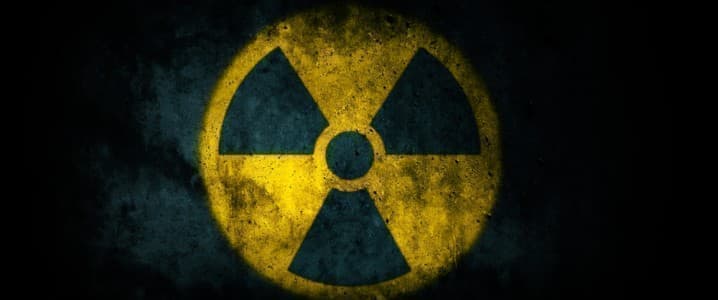After years of battling the poor public perception of nuclear power, several countries are now on track to develop their nuclear energy sector as governments encourage a shift away from fossil fuels to cleaner alternatives. Nuclear plants have the potential to provide abundant, clean power. However, there have long been fears over how to properly manage the nuclear waste produced at plants, to ensure that neither human health nor the environment are harmed during the disposal process. Several countries in Scandinavia believe that they may now have the answer, as they offer safe storage spaces for spent nuclear fuel.
The waste produced at nuclear plants can remain radioactive for around 10,000 years, meaning that its safe disposal is critical. There are three types of nuclear waste: low-, intermediate-, and high-level radioactive waste. Most of the waste produced at nuclear plants consists of lightly contaminated items, such as tools and work clothing, with a level of around 1 percent radioactivity. High-level waste is made up of spent fuel, which accounts for around 3 percent of the total volume of waste from nuclear energy production, although it contains 95 percent of the radioactivity.
Nuclear plants produce very little waste compared to other energy sources, as nuclear fuel is very energy dense, at around 5 grammes of high-level waste for one person’s annual energy consumption. A typical 1 GW nuclear plant, which can supply more than one million people a year with electricity, produces just three cubic metres of vitrified high-level waste per year.
However, nuclear waste is considered dangerous if not properly disposed of. In addition, due to the lack of understanding of the waste, several regions landmarked for waste storage, such as Nevada in the United States, have opposed such proposals. The World Nuclear Association estimates that the nuclear industry produces around 300,000 tonnes of nuclear waste each year, with most of it found in cooling ponds near the reactors where it was used.
After years of searching for potential solutions, three Scandinavian countries – Sweden, Finland, and Norway – believe they may have the answer. In January, Sweden commenced construction on a repository for the long-term storage of spent nuclear fuel in Söderviken, near the Forsmark nuclear power plant. The Swedish Nuclear Fuel and Waste Management Company (SKB) was granted a permit to build and operate the facility in October last year. SKB expects the nuclear industry to cover the $1.08 billion cost of the repository.
An anticipated 12,000 tonnes of nuclear waste could be stored in rock in the repository at a depth of 500 metres. The spent fuel will be encased in 5-metre-long, corrosion-proof copper capsules, before being surrounded by clay and entombed. The facility will cover around 24 hectares and include several buildings and a rock stockpile. It is expected to be able to safely contain the waste for 100,000 years. SKB hopes to begin accepting waste in the late 2030s, although the facility will not be fully completed until around 2080 when the tunnels will be sealed.
Finland has launched a similar project on its west coast, around three hours from Helsinki. The country’s first encapsulation plant, Onkalo, will receive nuclear waste from the country’s five nuclear reactors. The Finnish firm Posiva Oy, which was established by two nuclear operators in 1995 to find a means of storing spent fuel, is developing the facility. Spent fuel is expected to be buried in rock at a depth of around 430 metres at Onkalo.
In March, five test containers, filled with nonradioactive materials were sealed in a facility above ground before being moved underground to be stored in a 70-metre-long subterranean tunnel. To date, Posiva Oy has invested around $1 billion on the project, and expects costs to total around $4.5 billion upon completion.
Meanwhile, in April, a group of nuclear experts in Norway recommended the country build a deep geological landfill for high-level waste and a medium-depth geological repository for low- and intermediate-level waste. The Norwegian Nuclear Decommissioning (NND) group, established in 2018, has been exploring ways to safely dispose of spent nuclear fuel. In November 2022, the consortium Geological Repositories for Norway (GeoReN) was awarded a $41 million agreement to support NND in finding disposal solutions.
After years of assessment, the group decided the best solution would be to develop a deep geological landfill, with a rock hall at between 400-500 metres underground, similar to those being developed in Finland and Sweden. The group recommended for low and intermediate-level waste, Norway should develop a medium-depth geological repository, such as a rock vault or silo at 100 to 200 metres underground, like those in Slovenia, South Korea, and Finland.
For years, governments and nuclear experts have been exploring ways to safely dispose of nuclear waste, to support the development of the clean energy source. Finally, it appears that several Scandinavian countries are developing the blueprint for the safe storage of spent nuclear fuel, and, if successful, other countries will likely follow suit.
By Felicity Bradstock for Oilprice.com
More Top Reads From Oilprice.com
